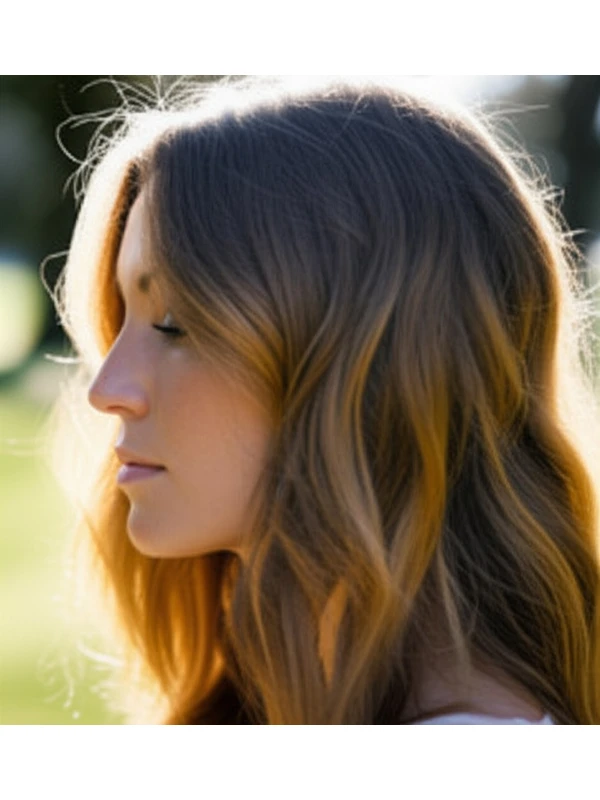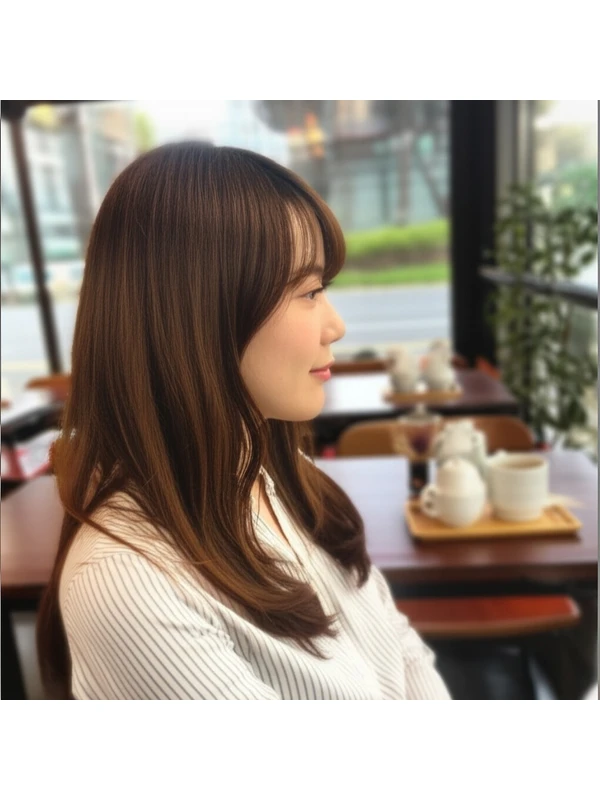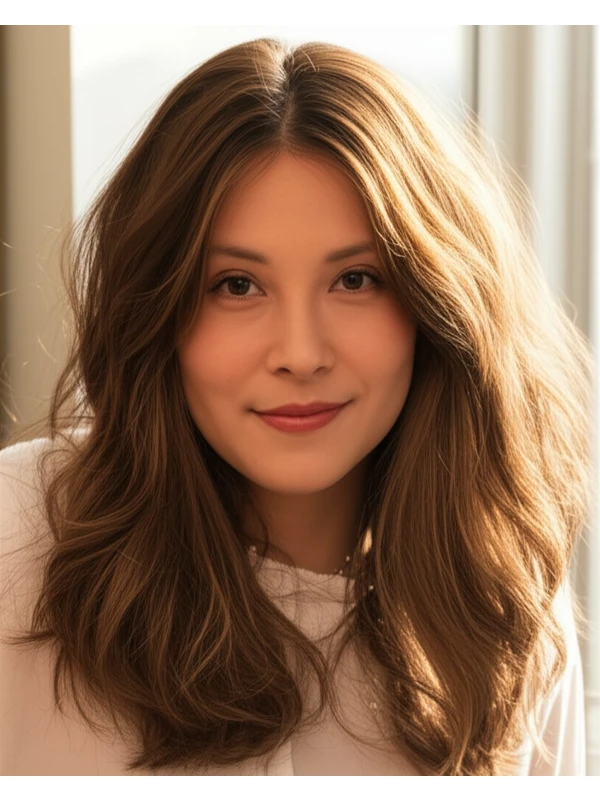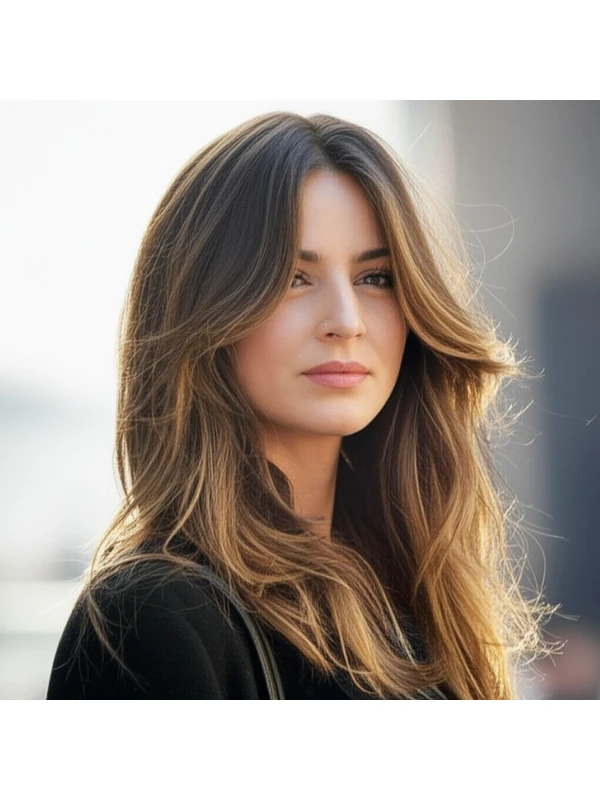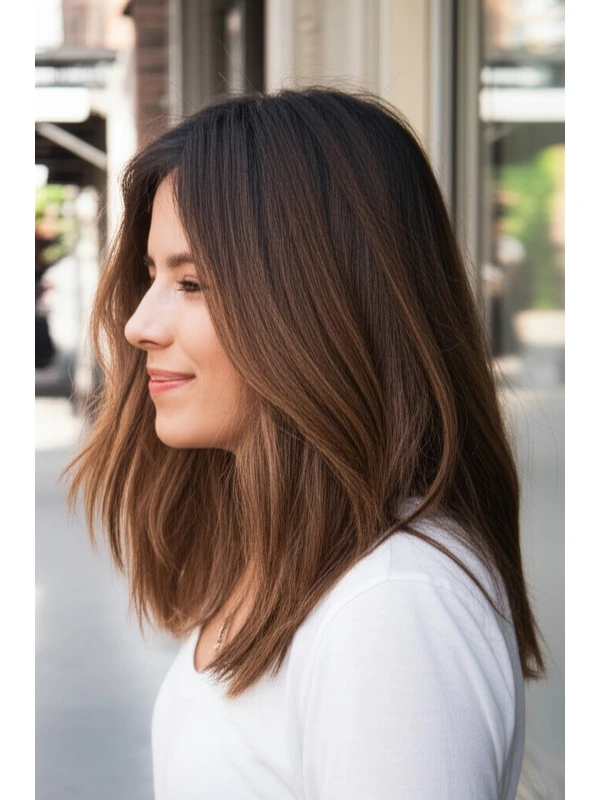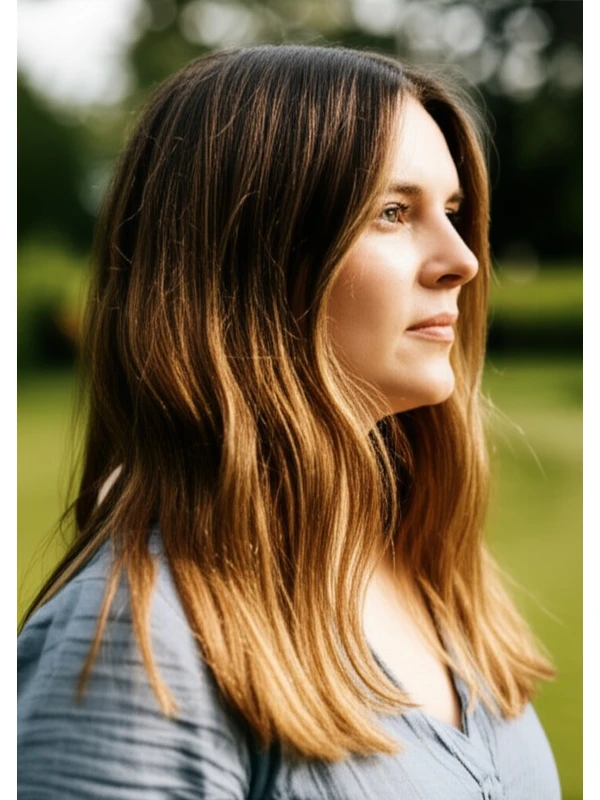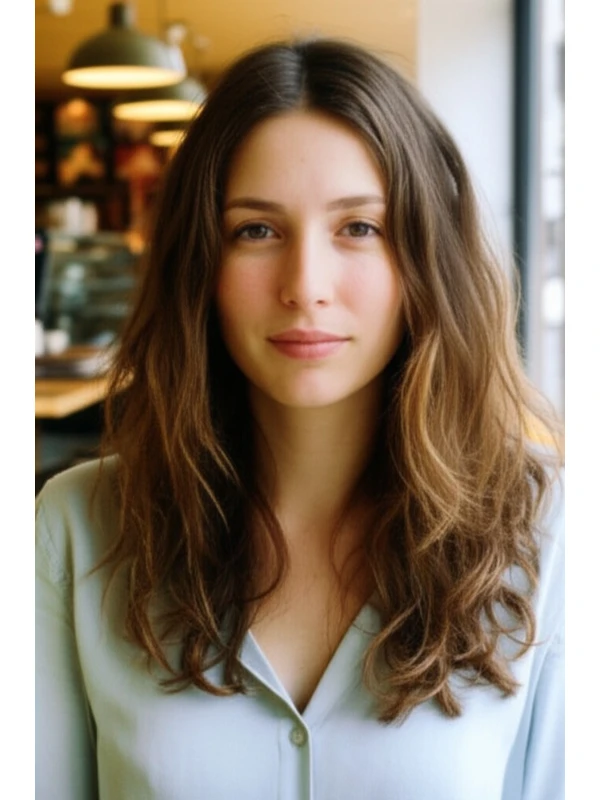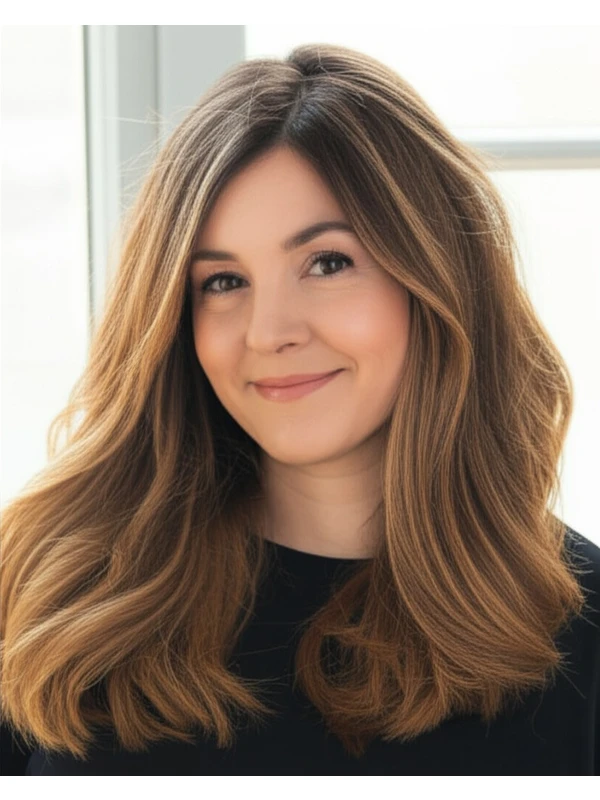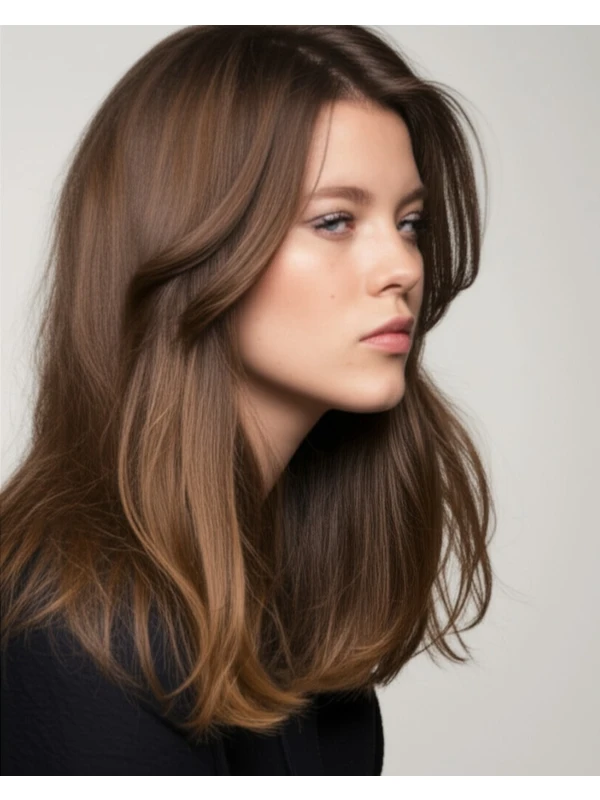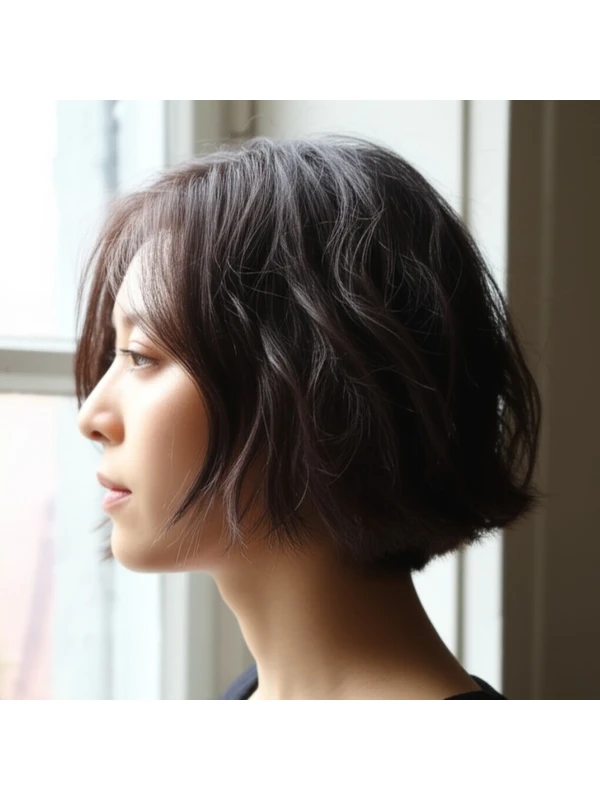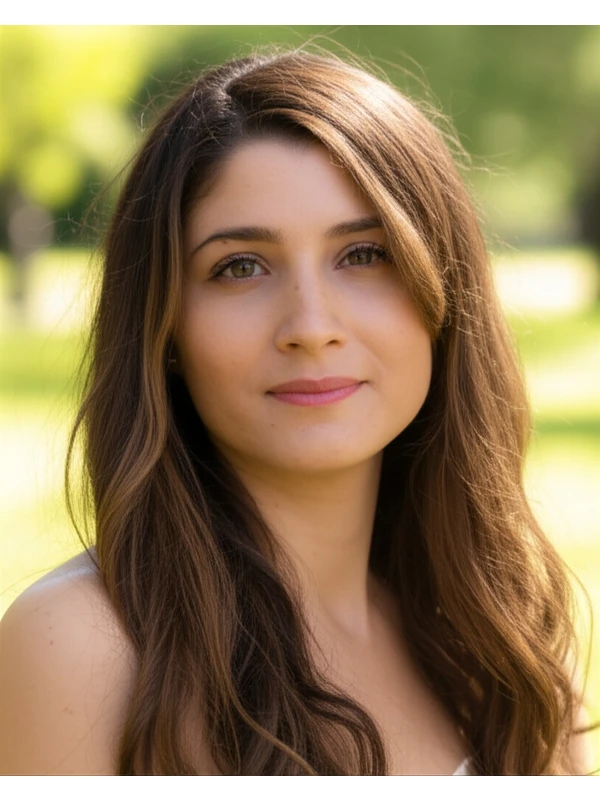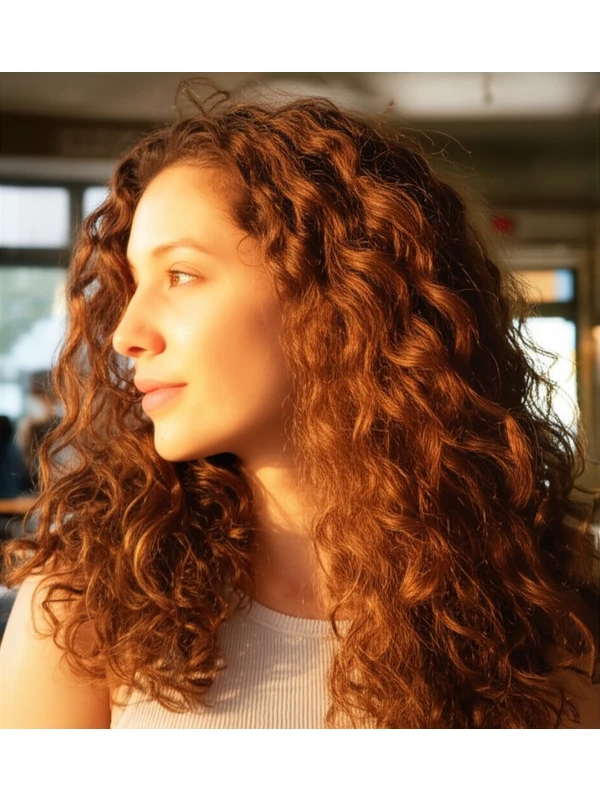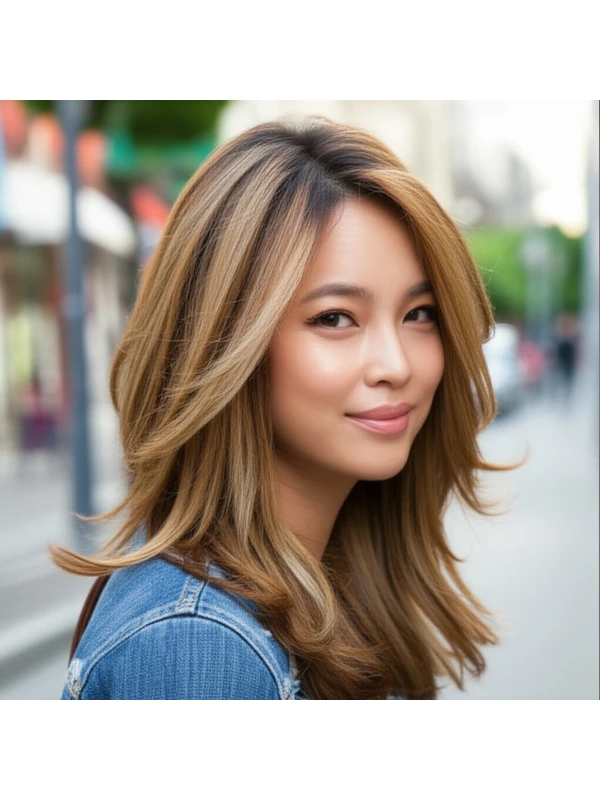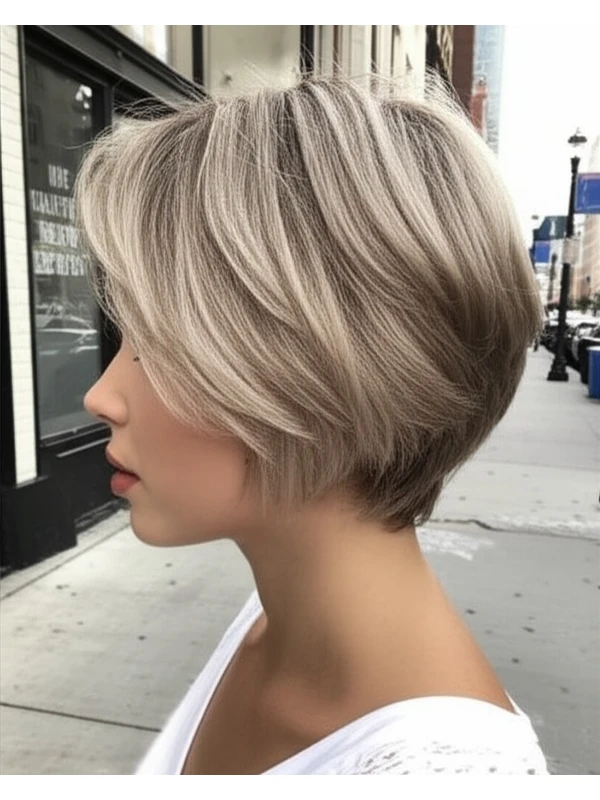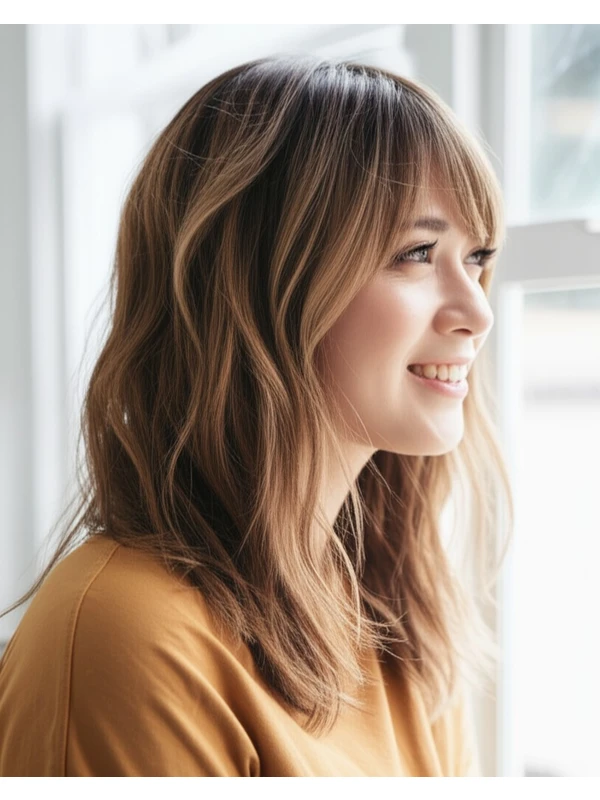#The Timeless Appeal of a Middle Part Long Hairstyle
The middle part long hairstyle is experiencing a major resurgence, and for good reason! It’s classic, elegant, and surprisingly versatile. But it's more than just splitting your hair down the middle – let's dive into what makes this style work (and how to make it work for you).
#1. Background & Definition: Understanding the Cut
A “middle part long” hairstyle essentially means having hair that falls past your shoulders, parted precisely in the center of your head. The length can vary significantly – from collarbone-length "long" to cascading down your back. It’s a cut defined by its symmetry and balance.
- Geometry: It's primarily about length and even distribution of weight around the face. There isn't necessarily a specific layering technique (though layers can be incorporated – more on that later!).
- Key Features: Symmetry, center parting, long length (typically past shoulder-length).
- Length Ranges: Collarbone-length to below mid-back.
- Alternative Names: Center Part Long Hair, Balanced Long Style, Classic Middle Part.
#2. Face Shape Fit: Finding Your Balance
The beauty of a middle part long hairstyle lies in its ability to be adapted for almost any face shape. However, understanding how it interacts with your features is key.
- Oval Faces: Lucky you! Oval faces are the most universally flattering for this style. It enhances natural symmetry and elongates the face beautifully. Fringe Options: A soft curtain fringe or a blunt, eyebrow-grazing fringe can add personality.
- Round Faces: The length helps to visually elongate a round face. Avoid too much volume at the sides, which can widen the face further. Fringe Options: Side-swept bangs soften the edges and create asymmetry; avoid heavy, straight-across fringes.
- Square Faces: Soften those angles! A middle part long style with subtle layering around the jawline will diffuse a square shape. Fringe Options: A feathered or textured fringe can help to break up harsh lines.
- Heart Faces: The length balances out a wider forehead and draws attention downwards. Avoid too much volume at the crown, which can exaggerate the width of your forehead. Fringe Options: Side-swept bangs are generally flattering, softening the pointed chin.
- Diamond Faces: Similar to heart faces, the length helps balance broader cheekbones. Adding subtle layers around the face will create softness. Fringe Options: A wispy fringe or soft curtain bangs can be very effective.
- Oblong (Long) Faces: While this style is generally flattering, avoid excessive length as it can further elongate your face. Consider adding more volume at the sides to add width. Fringe Options: A blunt, straight-across fringe can help shorten the appearance of a long face.
#3. Body Proportions & Height Guidance: The Silhouette Effect
The way this hairstyle impacts your overall silhouette depends on your body type and height.
- Petite: Shorter lengths (collarbone to shoulder) work best to avoid overwhelming a smaller frame. Too much length can visually shrink you down.
- Average Height: Most lengths work well, allowing for greater versatility in styling.
- Tall: Longer lengths (past mid-back) are generally flattering and help balance height.
- Narrow Shoulders: Adding subtle layers around the face and a touch of volume at the sides can create the illusion of broader shoulders.
- Broad Shoulders: Avoid too much volume on top, which can accentuate shoulder width. A sleek, straight style is often most flattering.
- Short Neck: Medium to long lengths are best; avoid styles that fall directly against the neck as they visually shorten it further.
- Long Neck: Longer lengths (past mid-back) help balance a longer neck and create a more proportional look.
#4. Works Best With Hair Types & Densities: A Texture Breakdown
This style is adaptable, but certain hair types require specific considerations.
- Straight Hair: Looks incredibly sleek and polished with this cut. Easily styled and maintained.
- Wavy Hair: The middle part enhances natural waves and creates a soft, romantic look. Be mindful of frizz – a good leave-in conditioner is key!
- Curly/Coily Hair: This style showcases the curl pattern beautifully when done correctly. Shrinkage: Remember to account for shrinkage - what looks long in the salon might appear shorter once dry. Layers are crucial for removing weight and preventing a triangular shape.
- Fine Hair: Can look flat without proper layering or texturizing. Consider face-framing layers to add volume.
- Medium Hair: The most versatile density – this style generally works well with minimal adjustments.
- Thick Hair: Requires more strategic layering and thinning to prevent a bulky, heavy appearance.
#5. Styling Variations: From Sleek to Textured
The beauty of the middle part long hairstyle is its versatility!
- Sleek vs. Textured: A flat iron creates a sleek, polished look; using texturizing products (sea salt spray, mousse) adds movement and volume.
- Middle vs. Side Part: While we’re focusing on the middle part, switching to a side part instantly changes the vibe – softening angles and adding asymmetry.
- Fringe Variations: Curtain bangs, blunt fringes, wispy fringes - all can be incorporated depending on your face shape and desired look.
- Occasion Styling:
- Casual: Air-dried with a touch of leave-in conditioner.
- Office: Sleek and straight with minimal flyaways.
- Evening: Hollywood waves or an intricate braid incorporating the middle part for added drama.
#6. Maintenance: Keeping It Looking Fresh
- Trim Cadence: Every 8-12 weeks to maintain shape and remove split ends. Curly/coily hair may need more frequent trims (every 6-8 weeks).
- At-Home Routine: Gentle shampoo, hydrating conditioner, leave-in conditioner (especially for wavy/curly/coily hair), heat protectant if using hot tools.
- Heat vs Air-Dry: Air drying is healthier; however, a flat iron or curling iron can achieve specific looks.
- Product Checklist: Shampoo & Conditioner (suited to your hair type), Leave-in Conditioner, Heat Protectant (if applicable), Styling Cream/Mousse/Serum, Finishing Hairspray.
- Estimated Daily Styling Time: 15-45 minutes, depending on desired style and hair texture.
#7. Grow-Out Roadmap: The Evolution of the Style
- Months 1-3: The initial shape is most defined. Focus on maintaining the center part and keeping ends trimmed.
- Months 3-6: Hair starts to grow out, potentially losing some definition. Consider adding subtle layers or a face-framing element to refresh the look. The middle part may start to feel less precise – embrace it or adjust accordingly!
#8. Color Pairings: Enhancing Your Look
- Cool Undertones (ash blonde, cool brown): Enhance the sleekness and sophistication of the style.
- Warm Undertones (golden blonde, caramel brown): Add warmth and dimension, particularly flattering for those with warmer skin tones.
- Low-Commitment Options: Balayage or highlights can add depth and interest without a drastic color change.
#9. Season & Occasion Guide: Adapting to the Moment
- Spring/Summer: Lighter colors, beachy waves, air-dried texture.
- Fall/Winter: Richer tones (chocolate browns, deep reds), sleek styles, more polished looks.
- Work: Sleek and professional – minimal fuss.
- Weddings: Romantic updos or loose waves incorporating the middle part.
- Parties: Experiment with texture and volume for a fun, festive look.
#10. Cost & Time: What to Expect at the Salon
- Salon Time: 1.5 – 3 hours (depending on hair length, density, and desired styling).
- Estimated Price Range: Relatively high—expect to pay more than you would for a shorter style cut.
#11. Pros & Cons: The Trade-Offs
Pros: Classic elegance, versatile styling options, flattering on many face shapes, showcases hair length beautifully. Cons: Requires regular trims, can be time-consuming to style (depending on desired look), may not suit very short necks or extremely fine hair without careful layering.
#12. Salon Consultation Script: Questions to Ask Your Stylist
- "I'm interested in a middle part long hairstyle. What length would you recommend for my face shape?"
- "Can we incorporate layers to add volume/remove weight?"
- “How can we best manage [frizz/volume/lack of movement] with this style?”
- "What products do you recommend for maintaining the health and appearance of my hair at home?"
- "Could you show me how to achieve a few different styling options (sleek, textured)?”
#FAQs: Your Burning Questions Answered
- Is a middle part long hairstyle suitable for fine hair? Yes, but strategic layering is crucial to avoid flatness. Face-framing layers can add volume and movement.
- How do I keep my middle part from looking uneven? Use a tail comb to ensure the center point is precise. Practice! It takes time to find your true center.
- Can I wear glasses with this hairstyle? Absolutely! The length helps balance facial features, and you can adjust the styling (e.g., soft waves) to complement your eyewear.
- What if my hair naturally parts on one side? It takes time and training for the hair to shift its natural part. Use a strong-hold product like mousse or gel applied directly at the center parting line, and train it daily.
- How can I add volume without looking "big"? Focus on layering around your face rather than adding bulk all over. Root lifting sprays are helpful for subtle lift.
- Is this style suitable for older women? Absolutely! It’s a timeless, elegant look that can be adapted to suit any age and personal style. Consider softer layers and highlights to brighten the complexion.
